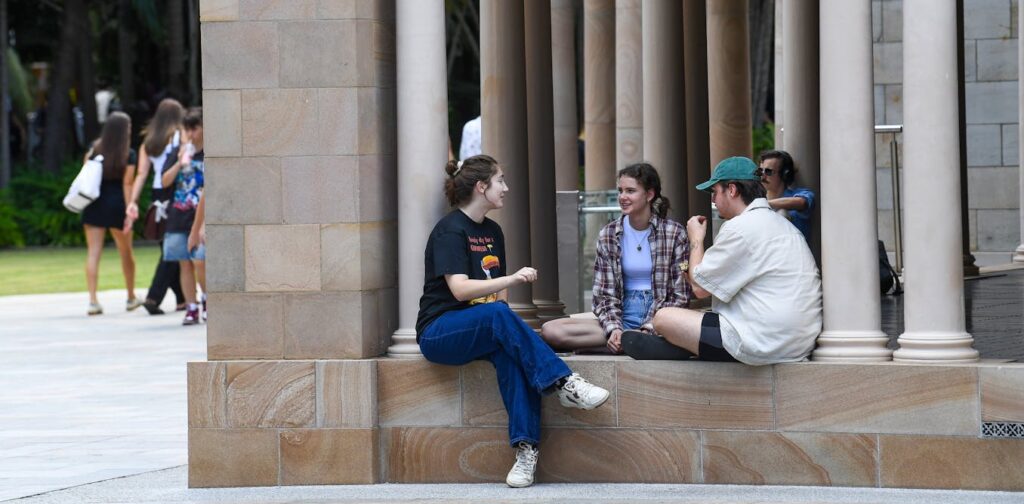
Last week in Sydney, a scene unfolded that encapsulates the current state of Australian universities. Inside the opulent Fullerton Hotel, a congregation of vice-chancellors, politicians, public servants, journalists, and consultants gathered for a higher education summit, sponsored by the Australian Financial Review and consultancy Nous Group. Notably absent from the official lineup of speakers were the teaching-only casual staff, who carry out the majority of teaching in many universities. Outside, in stark contrast, academics and students protested in the rain, voicing their concerns over staff cuts and governance issues plaguing the sector.
This event highlights a broader crisis within the higher education system in Australia, where the original mission of universities—pursuing the public good—seems to have been overshadowed by financial concerns. The expansion of the university system post-World War II was driven by a vision of nation-building and strengthening civil society. Prime Minister Robert Menzies, a key figure in this expansion, eloquently articulated this vision in 1942, emphasizing that universities should not be mere technical schools but bastions of pure learning and cultural enrichment.
The Financial Predicament
Today, however, Australian universities are frequently in the news for reasons that starkly contrast with Menzies’ vision. Reports of exorbitant executive salaries are common, and universities are cutting courses, jobs, and research, often justifying these actions as financially necessary. This financial focus has led to a loss of “social licence,” or the trust and support from the community that universities once enjoyed.
The governance structure of universities is part of the problem. University councils are often dominated by business figures rather than academics, and decision-making is increasingly outsourced to consultants. This has resulted in decisions that prioritize financial considerations over educational and societal contributions.
Exploring Solutions
To address the current crisis, scholars and researchers propose three primary approaches:
Policy Approach
Some experts, like former Melbourne University vice-chancellor Glyn Davis and foreign policy academic Michael Wesley, advocate for a policy-driven approach. They argue that the issues facing universities can be resolved with better policy settings that clarify universities’ purposes and promote diversity within the sector.
Public Good Approach
Another perspective is offered by cultural studies academic Graeme Turner, who, in his book Broken: Universities, Politics and the Public Good, argues that universities should be publicly funded to serve the public good. Turner sees the current system as fundamentally broken, not merely flawed.
Radical-Democratic Approach
Advocates like sociologist Raewyn Connell and historian Hannah Forsyth propose a radical-democratic approach. They call for universities to be reorganized as democratic institutions that include all members of the university community, providing spaces for dissent and aiming to transform society towards greater equality and justice.
While each approach offers valuable insights, current university leaders often struggle to move beyond the first—policy-driven solutions—and even then, their strategies appear limited.
Reimagining the Role of Universities
Universities are more than just educational institutions; they are incubators of knowledge and discovery, with obligations to preserve knowledge for future generations. This includes supporting research areas that may not be immediately economically viable but are crucial for national capabilities, such as linguistic and cross-cultural skills.
“Universities serve the public good and need to be publicly funded on that basis.”
To truly serve the public good, universities must look beyond financial sustainability to consider broader societal contributions. In a rapidly changing world, marked by technological, geostrategic, and political shifts, universities need to adapt to remain relevant and effective.
The Path Forward
Looking forward, a serious debate is needed about the expertise, capabilities, and qualities required for Australia to thrive in a world where traditional allies may no longer offer support, and social cohesion appears to be waning. While universities cannot solve these problems alone, they are undoubtedly part of the solution and must be included in national discussions about the future.
Ultimately, the challenge is not just about returning to a past ideal but about reimagining the role of universities in a way that aligns with contemporary societal needs and aspirations. This requires a collective effort from all stakeholders to ensure that universities can fulfill their potential as centers of learning, innovation, and societal progress.





